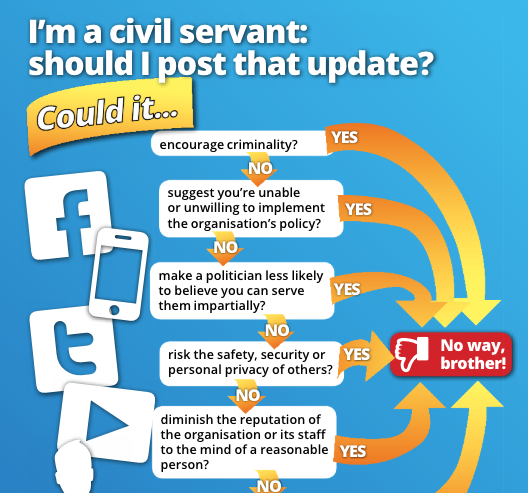We had a little retrospective last week to reflect on some of the highlights of the year in our website build and support work. We’ve built several sites we can be really proud of this year. We’ve made big leaps in our process and ways of working with separation of front and back end development, and in the sophistication of our version control.
But there was a slide my colleague put up which struck me as a different kind of achievement: it was a surprisingly long list of the clients we’ve chosen to part ways with this year.
My sense is that the orthodoxy of agency life is that you build up your client base as much as you can, hoping the more awkward or least lucrative customers fall naturally by the wayside. Shouty, demanding people, who complain a lot and show little gratitude, haggle over money and ignore your advice. Servicing them is something you rotate around your junior or newer hires, and everyone just accepts it’s the rough you take with the smooth.
I’ve learned there’s a cost to doing that, but let’s first define what we’re talking about. The ‘wrong’ clients fit into one or more of the following, for us at least:
- they want to work with us in a way which we can’t sustain, or need something we can’t offer
- they treat the team rudely and are unreasonably demanding or disrespectful
- we have exhausted strategies for recommending good practice, and we feel our professional advice isn’t being heard, limiting the work we can do
- the work they are asking us to do makes us gravely uncomfortable
I think it’s interesting what isn’t on that list for me. The ‘wrong’ clients aren’t necessarily unprofitable. They’re not necessarily boring or embarrassing organisations (I have quite a high threshold for that). Importantly, very little about the criteria are about the client organisations themselves; mostly it’s about the people we work with within them. In the nearly twenty years I’ve worked in agency environments, I’ve learned that worthy organisations often hire unpleasant people. On the other side, plenty of organisations with dark reputations have teams within them who are kind, creative and respectful. We can and do help them shed a little light.
So who did we part ways with, and why?
- Our contact at Client A is really lovely. She’s kind, clear and understanding, knows her area extremely well and is relied upon (as a contractor) by her organisation. More than we’re comfortable, to be honest, given the importance of her programme, which has grown behind the level of technical importance than we can support with our small team, and which is outgrowing our platform of choice, WordPress. We want her to get a proper budget for her work, follow the Service Manual approach and get a larger technical team in support of the service – and we’re helping hand things over now.
- Perhaps by contrast, our clients at Organisation B have absolutely the kind of project we can help with, and we’ve done a generally excellent, creative, flexible job over years. Despite this, several members of the team have experienced repeated rudeness from a couple of members of the client team, particularly on email or support tickets. We’ve all come to dread their emails, shifting goalposts or blaming us unfairly for changes or oversights. We’ve had this kind of client before: they sap everyone’s enthusiasm and from an agency perspective, chip away at our team morale and ability to retain good people.
- We have a kind and patient contact at Organisation C (which does important, world-leading work) but she has a colleague who is unreasonably demanding, particularly of the one member of our team who has the specialist expertise to support their application. We’ve made some mistakes or been slow to get some things done, and there’s an element again of WordPress not being quite the right technical fit. Suggesting they find a new supplier prompted them to re-tender the whole project. We bid for part of it but didn’t win. That’s a good outcome all round, on reflection.
- Client D raised some red flags early: their simple site build was driven by design guesswork and HIPPOism, not user needs. We tried relatively hard to explain our rationale, having asked clear questions about the brief and audience, and explained industry good practice and why it matters. The initial site we built is fine, but nobody really knows if it meets user needs; we passed on the tender to build their full site.
There’s a fascinating description of client B in Agencynomics by Spencer Gallagher, Peter Hoole & Jasmine Thompson (if you run or work in an agency, it’s a great read):
The Bully 🤷🏼♂️ @agencynomics pic.twitter.com/t2mZREnLh3
— G_a_v_i_n 🦆🦆💥🥶 (@iamChaz_) November 15, 2018
I’ve found that’s really insightful: bully clients are hard to say goodbye to, because under that aggressive and dissatisfied exterior, they are strangely loyal and even protective, and take the rejection more personally. But then, after all, I suppose it is their personality we are rejecting. I see little vistas into other agencies’ working cultures quite a bit on the skills side of our business, and I see a lot of bully clients being serviced by grin-and-bear-it account managers in large firms.
It’s easy to get judgmental about clients. We try to make an effort to step back and try to consider their needs, and what might be behind what feels like unreasonable behaviour. In some cases, I think we’ve got ourselves into trouble not communicating clearly with clients about our advice, being firm about scope before we become uncomfortable with changes, or simply avoiding screw-ups.
But I don’t think we need the bully clients. Small agency life can be stressful enough as it is, and the flip side to keeping lots of different clients happy is that you really do get to choose whose business you take.
